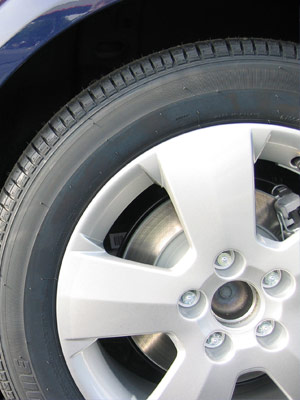Most tires work on a pneumatic system filled with compressed air, but the airless tire replaces the air with a special type of hardened polyurethane foam. This gives the tire similar properties of suspension without the risk of punctures, and this is the primary reason for its recent development. A tire that can not be punctured has many advantages in certain situations. For example, builders’ vehicles and military vehicles that have to operate over very rough terrain strewn with sharp debris are the most obvious examples, but more and more, airless tires are replacing the pneumatic in the less exciting worlds of lawn mowers, wheel barrows, golf buggies and even bicycles.However, relatively speaking, it is still early days for the concept of the airless tire, and it is not entirely without problems. They still do not have the same level of suspension as the pneumatic, but perhaps a more serious factor is that they fail to deal with the dispersion of heat that builds up internally as effectively as the pneumatic.No doubt that scientists and developers will be researching and seeking ways to solve these difficulties as I write, cheered on by everyone that has spent valuable time with rolled up sleeves by the roadside, and needless to say, always on the rainiest day of the year.
A tire that can not be punctured has many advantages in certain situations. For example, builders’ vehicles and military vehicles that have to operate over very rough terrain strewn with sharp debris are the most obvious examples, but more and more, airless tires are replacing the pneumatic in the less exciting worlds of lawn mowers, wheel barrows, golf buggies and even bicycles.However, relatively speaking, it is still early days for the concept of the airless tire, and it is not entirely without problems. They still do not have the same level of suspension as the pneumatic, but perhaps a more serious factor is that they fail to deal with the dispersion of heat that builds up internally as effectively as the pneumatic.No doubt that scientists and developers will be researching and seeking ways to solve these difficulties as I write, cheered on by everyone that has spent valuable time with rolled up sleeves by the roadside, and needless to say, always on the rainiest day of the year.
